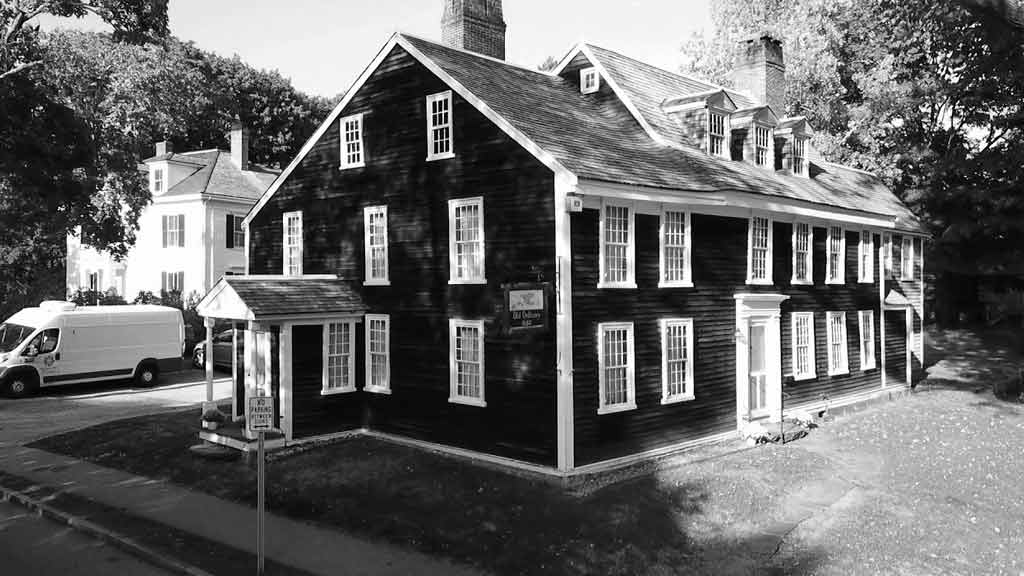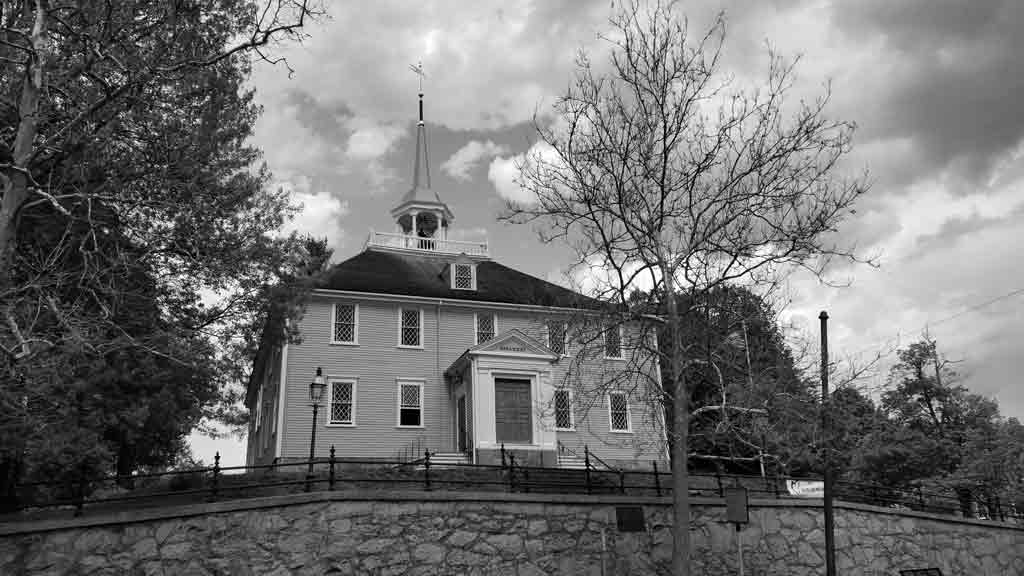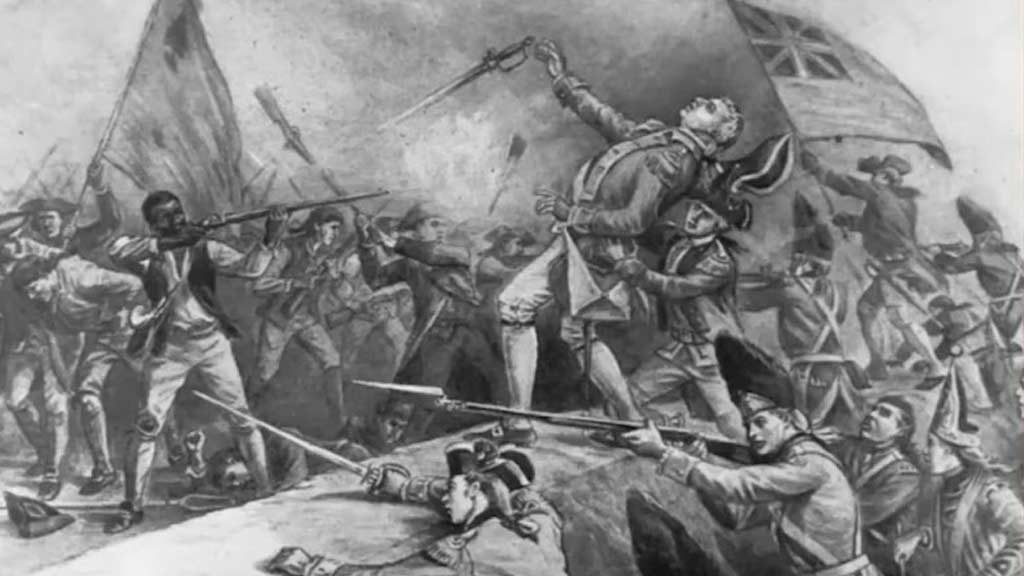From its humble beginnings in the 17th century to its vibrant present-day community, Hingham boasts a captivating narrative that intertwines with the fabric of New England’s past.
Step back to 1633, when a group of English settlers led by Peter Hobart ventured into the wilderness and established the foundations of Hingham.
Over the centuries, the history of Hingham, Massachusetts, has evolved from a farming and shipbuilding community into a bustling suburb. Yet, remnants of its colonial heritage still linger in its historic homes, churches, and town center.
Join us as we uncover resilience, innovation, and community spirit tales. From the early interactions with indigenous tribes to its role in the American Revolution, Hingham’s story reflects the broader sweep of American history.
History of Hingham, Massachusetts
Hingham, Massachusetts, stands proudly as one of the oldest continuously inhabited towns in the United States.
Its rich history spans over 375 years, weaving a tapestry of Native American encounters, colonial struggles, maritime adventures, and evolving industry. Here’s a glimpse into the key threads that shaped this historic town:
Pre-Colonial Era

Long before European settlers arrived, the land where Hingham sits was home to the Algonquian people, specifically the Massachuset tribe.
They thrived along the coast, living in harmony with the abundant natural resources for thousands of years. Their presence left behind archaeological traces, whispering stories of their lives and traditions.
17th Century Beginnings

In 1623, Captain Robert Gorges and other Puritans landed on the shores of present-day Hingham, naming it after Hingham, Norfolk, England.
They sought religious freedom and a chance to build a new society based on their beliefs. The early years were challenging, marked by harsh winters, disease, and conflicts with the native population.
However, the settlers persevered, establishing a self-governing community with agriculture and fishing as their mainstays.
Maritime Boom

Hingham’s proximity to the Atlantic Ocean fueled its rise as a prominent shipbuilding center. Skilled craftsmen built vessels ranging from fishing boats to transatlantic merchant ships.
This maritime industry fueled the town’s economy and fostered a spirit of adventure. Hingham ships navigated global trade routes, bringing prosperity and connecting the city to the broader world.
Revolutionary Spirit

The 18th century saw Hingham actively involved in the American Revolution. Residents like John Hancock, a founding father and signer of the Declaration of Independence, played significant roles in the movement.
Many citizens provided financial support, participated in militias, and even built ships used in the war effort. Hingham’s shipbuilding prowess contributed immensely to the patriot cause.
Transformation and Diversification of 19th Century
With the decline of its shipbuilding industry in the early 19th century, Hingham adapted and diversified. Shoemaking, straw hat manufacturing, and agriculture became essential sectors.
Businesses like Bates Hats achieved international recognition, making Hingham a center for hat production. The railroad’s arrival in 1848 connected the town to Boston, further stimulating its economic growth.
Preservation and Progress in 20th and 21st Centuries

The 20th century witnessed suburbanization and population growth in Hingham. However, residents remained committed to preserving the town’s historic character.
Strict zoning regulations protected its colonial charm, and many historic buildings were meticulously restored. Today, Hingham boasts a vibrant blend of historical sites, thriving businesses, and a strong sense of community.
Beyond the Milestones

Beyond these significant markers, Hingham’s story is enriched by countless individuals and events.
The Old Ordinary, one of the oldest continuously operating taverns in the US, whispers tales of colonial revelry. The Barefoot College, founded by a Hingham native, educates women in developing countries.
Hingham’s diverse cultural tapestry includes the Hingham Historical Society, the annual Antique Street Fair, and vibrant art and music scenes.
A Living Testament to History
Hingham’s journey is a testament to the human spirit’s resilience, adaptability, and pursuit of community. From its Native American roots to its revolutionary zeal, maritime prowess, and modern-day dynamism, the town embodies a rich and evolving narrative.
With its commitment to preserving its heritage while embracing progress, Hingham continues to write its unique chapters in the grand story of American history.
What Is Hingham MA Famous for in History?
From its colonial beginnings to Hingham’s role in the Revolutionary War and beyond, Hingham’s heritage is rich and diverse. Here’s an exploration of what makes Hingham famous in history:
Colonial Settlement and Early History

Hingham’s story begins in 1633 when a group of English settlers, including Rev. Peter Hobart, arrived in the area. They named the settlement after the town of Hingham in Norfolk, England.
These early settlers were primarily Puritans seeking religious freedom and the opportunity to establish a new community in the New World.
Old Ship Church

One of the town’s most notable features from this period is the Old Ship Church, built in 1681. It is the oldest continuously used church in the United States and is renowned for its unique architectural style, resembling an upside-down ship’s hull.
The church symbolizes Hingham’s early maritime heritage and commitment to preserving its colonial legacy.
Shipbuilding and Maritime Trade

In the 18th and 19th centuries, Hingham became a hub for shipbuilding and maritime trade.
The town’s proximity to the coast made it an ideal location for constructing ships, and Hingham shipyards were renowned for their craftsmanship and innovation. Shipbuilding brought prosperity to the town and fueled its economy for generations.
The HMS Rose
One of the most famous ships built in Hingham was the “HMS Rose,” a British frigate constructed in 1757. The “HMS Rose” played a significant role in the Revolutionary War, serving as a British warship and engaging in battles along the eastern seaboard.
Its capture by American forces in 1775 was a pivotal moment in the war and contributed to the eventual independence of the United States.
Revolutionary War Contributions
Hingham played a vital role in the Revolutionary War, with many of its residents actively participating in the fight for American independence.
The town’s militia, known as the Hingham Minutemen, mobilized in response to the growing tensions with Britain and played a crucial role in several key battles.
Revolutionary War Heros

One notable figure from Hingham’s Revolutionary War history is General Benjamin Lincoln. Lincoln, a native of Hingham, served as a major general in the Continental Army and played a significant role in the Southern theater of the war.
He was present at the British surrender at Yorktown in 1781, a decisive moment that effectively ended the conflict.
Cultural and Literary Heritage
Hingham has also left its mark on American culture and literature. One of its most famous residents was John Greenleaf Whittier, a renowned poet and abolitionist.
Whittier spent his formative years in Hingham and drew inspiration from its natural beauty and rich history in many of his works.
Contribution to Art
Additionally, Hingham’s picturesque landscapes and historic landmarks have served as settings for numerous novels and films, further contributing to its cultural legacy.
The town’s quaint New England charm and storied past continue attracting visitors and artists, keeping its heritage alive for future generations.
Modern-Day Legacy
Today, Hingham remains a vibrant community that honors its history while embracing modernity. Its historic downtown area is lined with charming shops, restaurants, and galleries, welcoming residents and tourists to explore its unique blend of past and present.
Preservation of Historic Sites
The town’s commitment to preserving its heritage is evident in its numerous historic sites and landmarks, including the Old Ordinary Museum, which showcases artifacts and exhibits related to Hingham’s colonial history.
Additionally, organizations like the Hingham Historical Society work tirelessly to document and share the town’s story with the public.
FAQs
When was Hingham, Massachusetts, founded?
Hingham, Massachusetts, was founded in 1633 by English settlers led by Rev. Peter Hobart. The town was named after Hingham, Norfolk, England.
What is the significance of the Old Ship Church in Hingham’s history?
The Old Ship Church, built in 1681, is the oldest continuously used church in the United States. It symbolizes Hingham’s colonial heritage and maritime legacy, known for its unique architectural design resembling an upside-down ship’s hull.
Did Hingham play a role in the Revolutionary War?
Yes, Hingham played a significant role in the Revolutionary War. The town’s militia, the Hingham Minutemen, mobilized in response to tensions with Britain. General Benjamin Lincoln, a native of Hingham, served as a major general in the Continental Army.
What is Hingham, Massachusetts, known for today?
Today, Hingham is known for its historic charm, picturesque landscapes, and vibrant community. Its quaint downtown area, historic landmarks, and cultural events attract visitors.
Are there any famous residents associated with Hingham?
Yes, one of Hingham’s most famous residents was poet and abolitionist John Greenleaf Whittier. He drew inspiration from the town’s natural beauty and history in many of his works. Additionally, Hingham has been home to notable figures in politics, literature, and the arts.
Conclusion
The history of Hingham, Massachusetts, serves as a captivating narrative of resilience, community, and transformation.
From its colonial origins to its modern-day charm, Hingham has weathered the tides of change while retaining its distinct character.
As we reflect on its past, we are reminded of the countless individuals whose contributions shaped the town’s trajectory – from early settlers forging a new life in the wilderness to Revolutionary War heroes defending liberty’s cause.
Today, Hingham stands as a living testament to the enduring spirit of American heritage, where historic landmarks coexist harmoniously with a thriving community.
As we walk its storied streets and explore its rich tapestry of history, let us cherish the lessons of the past and draw inspiration from the journey of Hingham – a town forever woven into the fabric of America’s story.
Delve deep into the captivating history of Hingham, Massachusetts, and discover the threads that bind past and present.
Jaclyn Lowe